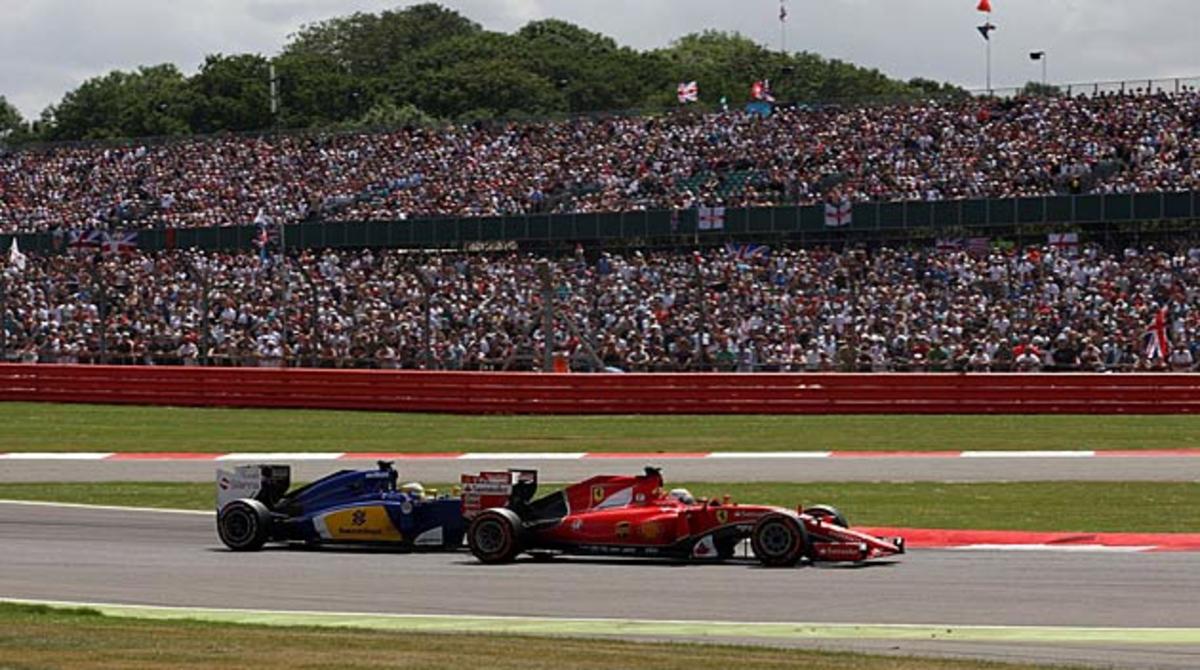Ferrari legend Luca di Montezemolo on growing F1 in America, more

DETROIT — Luca Cordero di Montezemolo might not be a familiar name to most Americans. But the company he stewarded for three decades, Ferrari, sure is.
During his tenure, which he began as the right hand man of founder Enzo Ferrari and distinguished himself as the steward of the firm’s Formula 1 program, di Montezemolo claimed 19 drivers and constructors championships for Ferrari. On Thursday night, di Montezemolo was inducted into the Automotive Hall of Fame alongside other industry luminaries, including the fabled American racing owner Roger Penske.
Before claiming his capstone prize inside the ballroom of the Detroit Marriott at the Renaissance Center, General Motors’ iconic headquarters, di Montezemolo sat down for a wide-ranging interview. Speaking with a passion that tended to come out in full paragraphs that begin in the royal first person, even though it’s been nearly a year since he resigned from Ferrari, di Montezemolo—ever slim and stylish even at 67 years old—reflected on the company he built, F1’s future (abroad and right here, in America) and its stars (past, present and lost), and his latest ambitious effort: bringing the Olympics back to Rome.
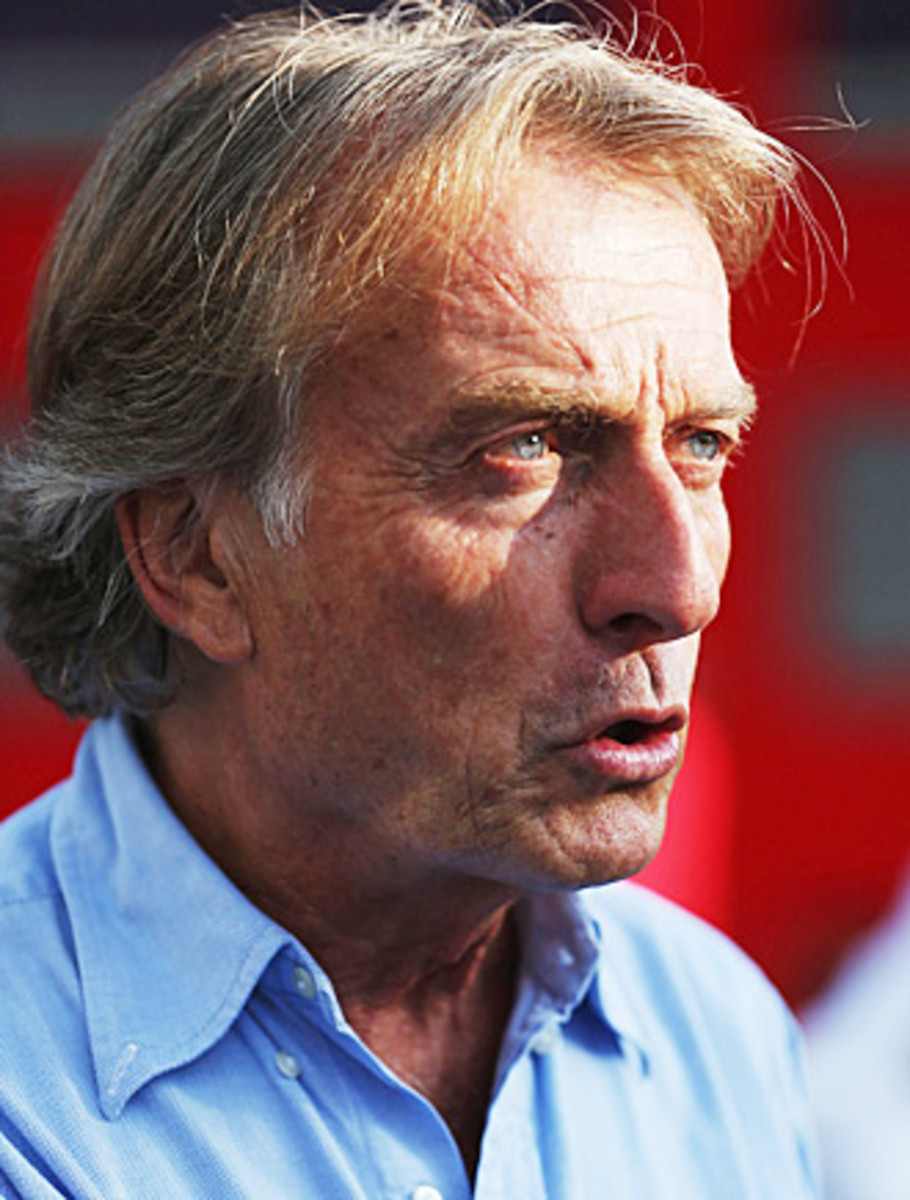
, and five universities have awarded you honorary diplomas. Where does this prize rank?
di Montezemolo: This prize is related with what has been my life for 30 years. I was hired by Ferrari in '73. I became a young team manager, won two championship titles with NikiLauda, lost once just by half point. (You know, Rush? The movie?) And I made a fantastic experience together with such unbelievable men like Enzo Ferrari and with Sergio [Pininfarina], the best designer in the world for cars.
SI.com: In NASCAR and IndyCar, manufacturers like to say they race on Sunday so they can sell on Monday. How true is that for Ferrari?
di Montezemolo: For me, racing is still the best advanced research center to transfer something to our cars. Some years ago, I made the polemic with Formula 1 because I said, ‘Listen, I’m not a sportsman. I’m a car manufacturer. I race in Formula 1 to improve our technology, to transfer technology to the road car. So I need Formula 1 to maintain research characteristics. A few years ago Formula 1 was basically aerodynamic. I don’t do helicopters. I don’t do airplanes. I do cars. So aerodynamics is important, but it cannot be the main ingredient to be competitive.
And you know, it’s strange to say, but for me winning is not important to sell more cars. For me, [it’s better] to be competitive. We have won a lot. We lost the last race, in 2012, in 2010, in 2008, at the last lap of the last race. For me it's important to maintain Ferrari on the top. You can win one year, you can arrive second [another]—but stay at the top. And this means a good transfer for technology.
SI.com: Ferrari has parlayed its on-track success into a reputation as one of the world’s most exclusive brands. Do you see that remaining the case, even as Fiat prepares to take Ferrari public?
di Montezemolo: This I cannot say to you. For sure, this is a question you have to ask to somebody else. Finance markets, financial analysts are becoming very, very important. I hope that the clients will remain the most important. (I think if not it will be a big mistake.)
Racing is important. Formula 1 is important. I think Formula 1 without Ferrari is not Formula 1. But I think also Ferrari without Formula 1 is a different Ferrari. Innovation is very important. We have to look ahead. I think Formula 1 needs to look ahead. [F1 boss] Bernie Ecclestone, that is a friend of mine, did a fantastic job. And now it’s time to do a five year program to do investments. So the owner of Formula 1 has to approach the future not only as an [investor] but also as an entrepreneur—like a company that has to gain more market share.
SI.com: Do you think that the recent American investment interest, by Miami Dolphins owner Stephen Ross (in buying F1) and NASCAR owner Gene Haas (in fielding a team) will give F1 a firm foothold in the States?
di Montezemolo: Gene came to me last year. The cooperation with Ferrari [is underway]. But I don’t know if Steve Ross will be really involved, as I have heard. Anyway, what is important is to do a program to have Formula 1 in the United States. This has to be done in a very professional way—to create the proper preparation to launch Formula 1 in the United States. This is one of the key priorities. Austin (photo at top of page), I think, is a very good track. Personally, I like the town very much, so maybe I’m a little bit more enthusiastic.
SI.com: F1, as you know, has struggled to capture the imagination of the racing audience here, in part because their tastes run more toward personalities while F1 puts greater emphasis on technology. Wouldn’t the sport have to reconcile this somehow?
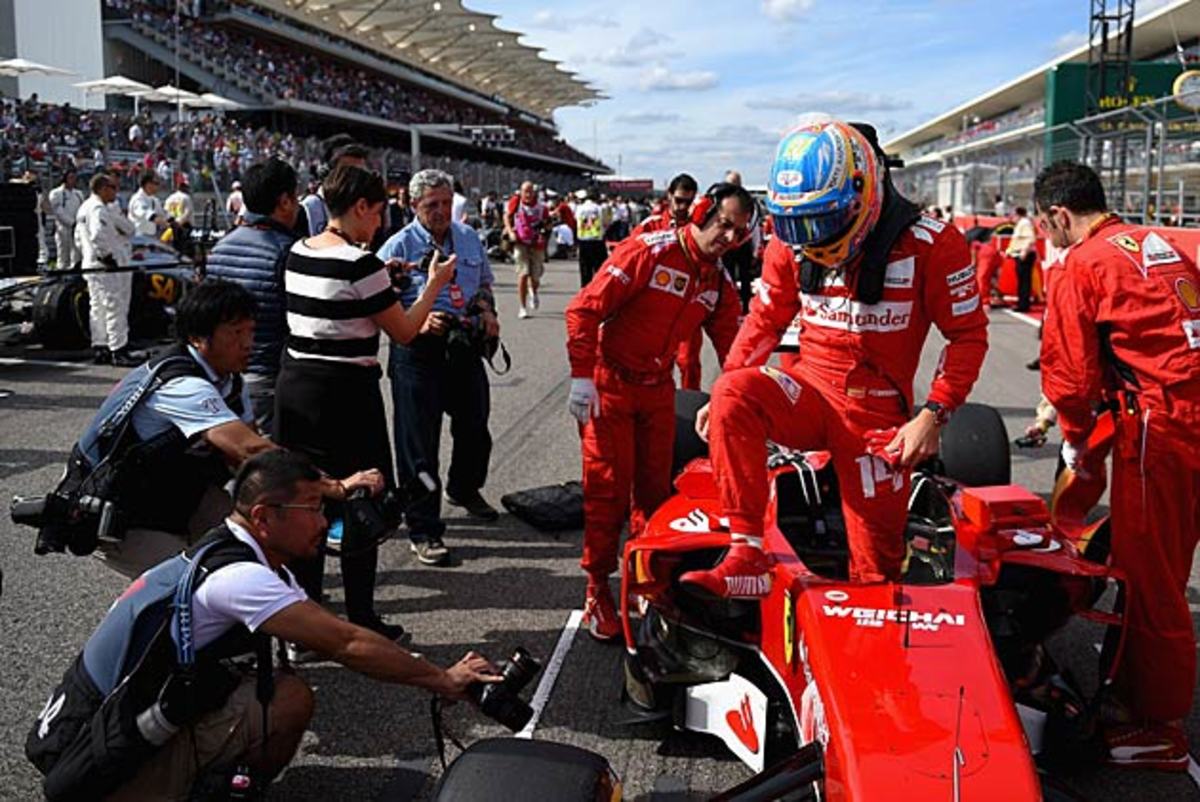
: I’ve studied NASCAR, and discussed a lot of time with Roger about Indy. I think one of the elements that has to be improved in Formula 1 is the relationship between the drivers and the public. The drivers today are too isolated. When you go in the pits of Formula 1, there is not the atmosphere that I want to have. I’ve been many times in Le Mans 24, we won with the Ferrari GT two years ago, and the relationship between the drivers [is much better]. This is something—when I mean five years, one of the [initiatives should be] to have a far more direct contact—even physically, let me put it this way.
SI.com: But how do you pull that off when outgoing drivers like Red Bull’s Daniel Ricciardo are outnumbered by reticent ones like your old Ferrari boy, KimiRaikkonen?
di Montezemolo: Kimi'sKimi. Kimi doesn’t speak even with himself! But on the other hand, he has a lot of charm. So you have to use these things in a good way to make him a personality. Danny is far more—because at the end of the day he’s Italian, so he’s more [outgoing]. The problem also is to manage the drivers in a proper way. Because they arrive, they’re put in the car. At the end of the day, they go away. They do a very formal, normal interview with very, let me say, banal [answers].
SI.com: Shouldn’t there be an onus on the league, on teams to put these guys out there more?
di Montezemolo: I agree. I totally agree. This is something—I remember I got in a fight with NikiLauda at the time because Niki was very silent, then he became outspoken. But it’s a question of how I want to position the product. And for sure in the States, the media support to the promotion of the sport is key. We have to look at the future in the United States, taking into account the characteristics of the country. If you import Formula 1 as it is today to the United States [wipes hands sharply], you make a mistake. I think we need five years to, I don’t want to say relaunch, but have a strategy, marketing, new technologies, social media in place.
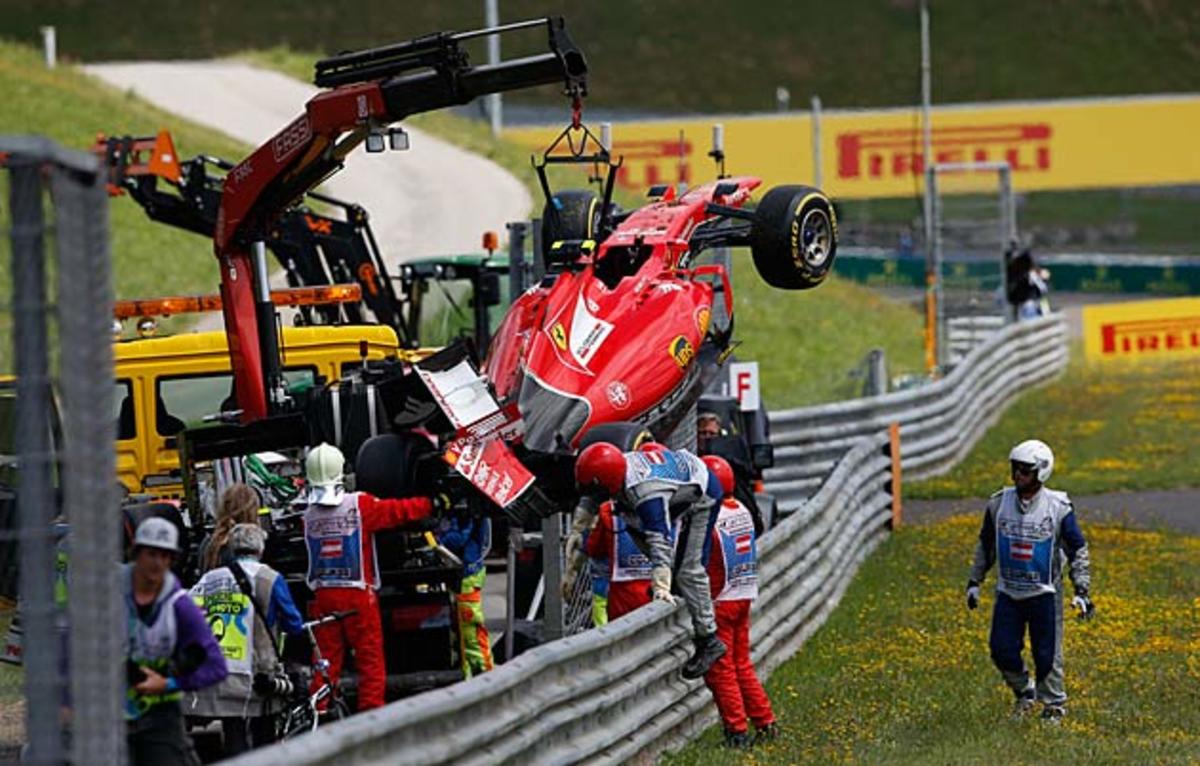
famously cheated death—what did you make of it?
di Montezemolo: With Niki, we speak to each other very often and we discussed this. He didn’t [mean] safety. He said, and I agree with him, that the cars are too slow. Too slow means they are not anymore on the limit like in the past. Thank god safety has been dramatically improved. I’ve seen a lot of drivers killed in fire, killed due to the [tracks] not being safe. So Formula 1 is still a dangerous sport. This is also a characteristic. But it’s not as it was in the past. And everything we can do to improve safety, we have to do.
Having said that, I remember that when I had been last year in Bahrain to watch the first race of the new engine, I was really disappointed. Because for me, the music of the engine in Formula 1 was fundamental. It’s like if you go to Italy and there is no pasta anymore. For me, Formula 1 has to keep improving extreme technology, but with less cost. We have to look at Formula 1 for the public, not for the engineers or the technicians. Because to do an exotic [and expensive] part that nobody looks at, for the public it doesn’t mean anything. It means cost in a stupid way.
SI.com: And yet for as far as the sport has come from a safety standpoint, there was still no rescuing Jules Bianchi. What do you make of his recent passing?
di Montezemolo: Jules was fantastic. He grew up with us. This is a typical example in which despite all we do for safety, it’s never enough. What happened to him cannot happen again. Jules was a very nice guy: intelligent, quick, and very good at working with the technicians. That was one of the main characteristics in the past of Niki and also Michael (Schumacher). When we decided to do the driver academy, he was the first young driver. We already decided when we hired Kimi—because we took Kimi for a contract for two years—we said, at the end of the two years, Jules will be ready to drive for Ferrari. He made the test with us the last year after the Abu Dhabi race at the end of the season. He made two days of testing, did very, very well. Unfortunately ... this is a pity because he was our driver of the future.
SI.com: You have said you are dedicating this award to Michael Schumacher. Why?
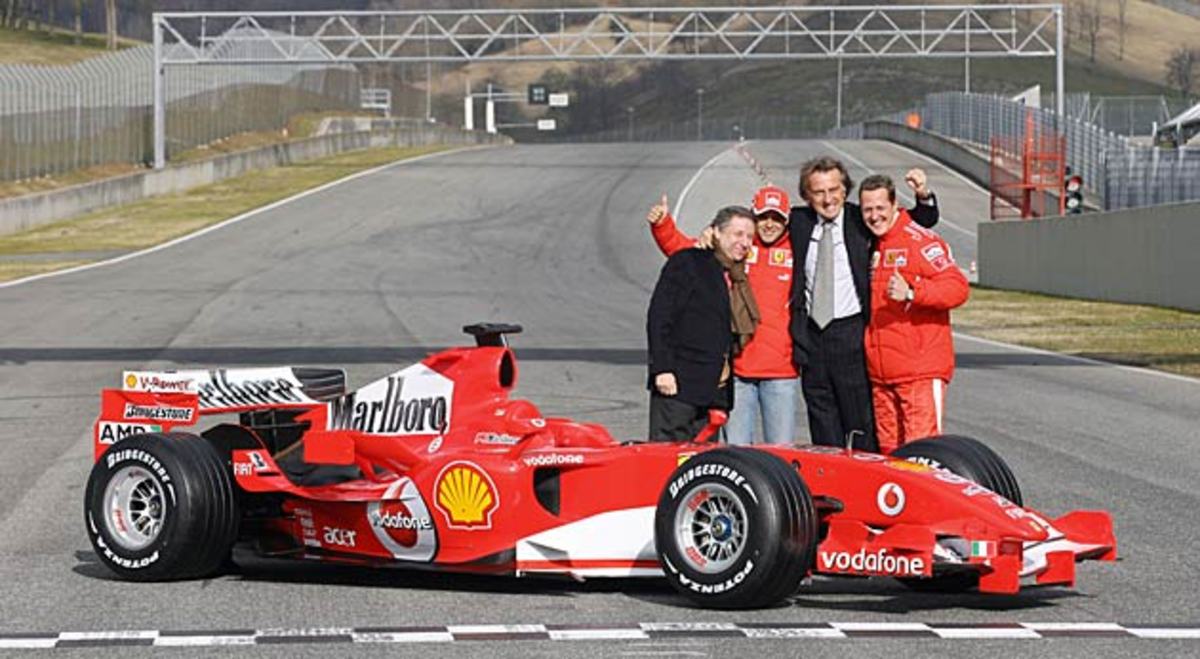
says to you that the value of Ferrari would be $10 billion on the market? I don’t know. Maybe it’s more …
SI.com: Forbes recently compiled a list of the 50 most valuable sports franchises. The Ferrari F1 program came in 32nd, with an estimated worth of $1.35 billion. That’s less than Chelsea F.C. but more than the New York Mets. It is the only racing team on the list.
di Montezemolo: I remember in 2000 I discussed with the editor of that magazine where [Ferrari] would be in 10 years. I never thought it would go public. For me becoming public is when you need money to invest. Ferrari doesn’t need this. Ferrari is becoming public because its [principal] shareholder, FCA, needs money—not Ferrari. That is a different story. So I think that if the value will be that, and you think from where we started, I think we have to say thank you very much to the people that have worked in the factories, in the offices, in the research center, in the design center.
SI.com: Could you see a day when analysts and investors are clamoring for Ferrari to get out of motorsports because it’s so expensive?
di Montezemolo: This is not my problem. This is a world that is very far from my competence and, to be honest, from my passion.
SI.com: And lastly, speaking of cost overruns, you are heading Rome’s bid for the 2024 Olympics. Given the shaky footing of the global economy and the preponderance of evidence of these events leaving cities worse off than they found them and, most importantly, the fact that people have heard of Rome before and seen an Olympics staged there, why on earth would you go for this?
di Montezemolo: Three main reasons: Number one, the Olympic Games are, have been and must remain the festival of sport. So to have in your town the best champions in every single sport is something unique—unique for the children, unique for you. The boys today in Rome, if we were to get the 2024 Olympics, they are now 10, 12 years old. In '24 they will be all the athletes who are trying to win at home. Or ready to do selfies with the champions. Or volunteers. So we have to look ahead.
Helio Castroneves: Slim margin for error at IndyCar, NASCAR speeds
Second, the possibility to improve some important sports facilities. We have the Olympia Stadium, we have the tennis, we have the swimming, we have the basketball. We have a lot of ready-for-tomorrow [arenas]. But for the small sport, crew, you can do something that without the Olympic Games we don’t do. And now we can do something outside Rome. So sailing, just to make an example, would go maybe to Sardinia. Maybe we can do rowing. So to improve even for the Olympic Games, you have to have also some facilities for training that after the Olympic Games are good for the schools, are good for the small sports that are not rich enough to build these facilities.
And the third is to improve the town. I made benchmarks of these cities: Barcelona, Sydney, London, and Torino—which has dramatically improved [since the ’06 Winter Games]. Barcelona is like a woman that [had plastic surgery]—before and after. Then you have Sydney. The work that the ecologists have done to improve the city has been fantastic, outstanding. London, they made the Olympic Village in an area that was a terrible area; it’s totally recuperated.
London was not in condition to have the Olympic Games, to promote London. If you can, do some sports outside the town in Italy, to give you the possibility to go to Florence, to go to Venice, to go to Milano, to go to Naples. And, last but not least, in parallel you do some fundamental improvement in the town. Looking ahead, this is good. If I look at Rome 1960, the main sports facilities are still there. The approach has to be like this in the front, but it’s possible. You know we can present an Olympic Games that is beautiful, culture rich and innovative.
This interview was excerpted from the original hour-long interview.
